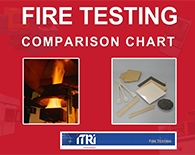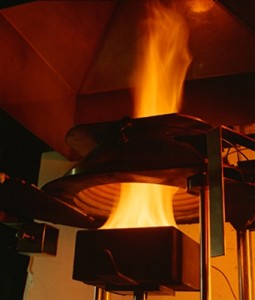
The Importance of Fire Testing Products – Manufacturing products comes with many obstacles that must be overcome, and one of those main issues is ensuring a product or material used is as fire resistant as possible. The reason for wanting fire-resistant products is varied, but most are either due to safety concerns or product development.

Understanding the reasons behind fire testing will enable you to identify whether or not your products and materials need testing. Most points are important aspects to think about as failing to fire test products could lead to future problems, which could result in certain losses for your business.
Fire testing is often needed due to rules that are beyond a company’s control, yet they have to adhere to otherwise their products will not be certified for selling in the UK, or in other countries. Local, state or national product codes are put in place to ensure products and materials will meet their specific guidelines on how a material can react in a fire. For instance, they might put in place a code saying materials may only give off so much smoke, so a business would have to make sure all their products are compliant.
When a fire happens there are frequently as few as three minutes in which a human being has to escape before the fire becomes seriously life threatening and engulfs most objects that are in the fire as well. Products should be created so that it takes the longest amount of time possible to ignite and, when they do, the rate of fire growth is slow. If not, then that product could be considered dangerous as it would contribute to the fire spreading quickly.
During a fire, smoke inhalation can often be the cause of death because as soon as the fire starts, smoke can be generated and can rapidly affect breathing and the ability to escape. Even if someone escapes a fire within three minutes they may have still inhaled some smoke, therefore if a product can generate as little smoke as possible it can help to save lives.
Polymers tend to burn differently to other materials, as some are man-made and others are organic. Many polymer products can be considered as plastic products, and many of the chemicals used to make them are toxic. If you were to burn wood, the fire produces a non-toxic smoke that although you shouldn’t inhale, is less harmful than if you were to burn a plastic food container. The container would typically produce very dark smoke, which is often toxic and can be seriously harmful.
When developing a product, it’s preferable that products and materials are as flame resistant as possible for the reasons of regulations and safety. When creating a product it’s best to get it right the first time. So testing materials that you’ll be using in the product whilst it’s still in development will ensure things won’t have to be changed later, set back production or cause more costs.
Conclusion
Fire testing procedures are widely available from laboratories all over the world as it’s an important aspect to creating a safe product for consumers. People don’t want to buy goods that will potentially make a life-threatening fire even worse and possibly be the cause of their demise.
If you’re wondering why your products or materials for products need testing then remember the main reasons that should be taken into consideration, which are:
Making sure your products are as fire-resistant as possible is very important to ensure consumers safety and help to avoid life-threatening fires due to products in the house.
For more information on fire testing techniques and a comparison chart with all the tests and their best uses, you can download our free printout “Fire Testing Techniques Comparison Chart“.
If you have any queries or questions about the issues covered in this blog, don’t hesitate to contact Alastair, one of our laboratory experts, on 01727 871301.